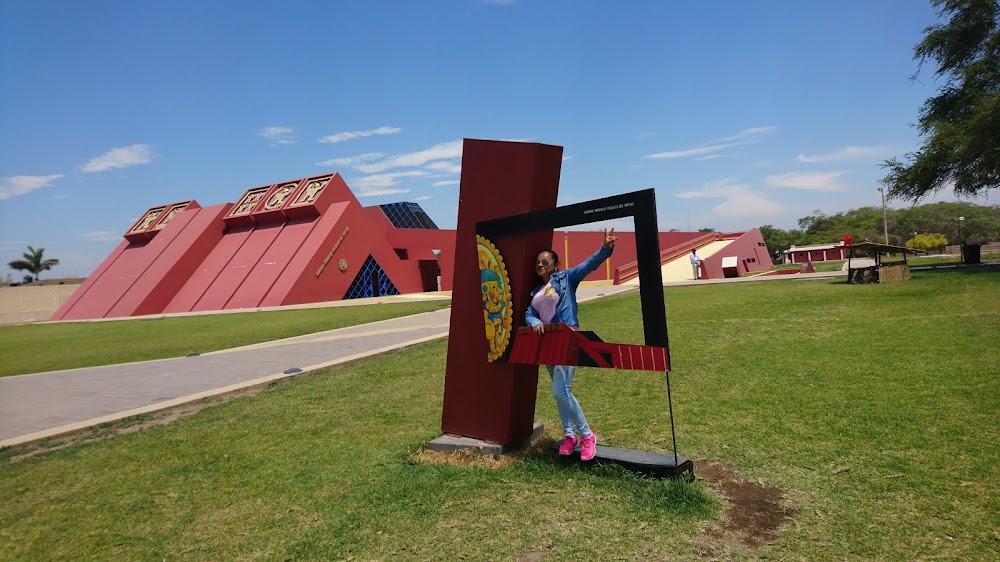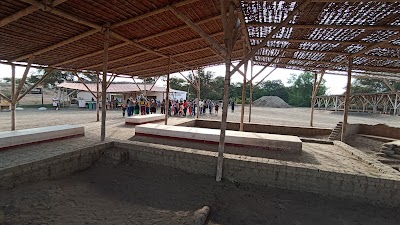Royal Tombs of Sipán Museum (Museo Tumbas Reales de Sipán)
Overview
The Royal Tombs of Sipán Museum is an extraordinary cultural and archaeological gem nestled in Lambayeque, Peru. This remarkable institution is dedicated to preserving and showcasing the artifacts unearthed from the ancient tombs of Sipán, offering visitors a captivating glimpse into the rich heritage of the Moche civilization, which thrived between 100 AD and 700 AD.
Discovered in 1987 by the renowned Peruvian archaeologist Dr. Walter Alva and his dedicated team, the tombs at Sipán revealed one of the most significant archaeological finds in the Americas. Among the treasures unearthed, the tomb of the Lord of Sipán stands out—a high-ranking Moche noble buried with a stunning array of valuable items, including gold, silver, and intricately crafted ceramics. The preservation and wealth of this tomb have drawn comparisons to the tomb of King Tutankhamun in Egypt, highlighting its importance in the world of archaeology.
The urgent need for a dedicated museum to house these incredible artifacts became clear shortly after their discovery. With support from local authorities, the Peruvian government, and various international organizations, the Royal Tombs of Sipán Museum was conceptualized. Designed by architect Celso Prado Pastor, construction of the museum began in 1991 and was completed in 2002.
The museum's architectural design is inspired by the ancient Moche pyramids, creating a symbolic link to the civilization it seeks to represent. The striking three-level structure features a façade resembling a truncated pyramid, while its gold-colored exterior reflects the wealth and grandeur of the artifacts housed within.
Upon entering, visitors are welcomed into a meticulously organized and climate-controlled space that protects and displays over 2,000 artifacts from the tombs. The museum's thoughtful layout allows for a chronological journey through Moche culture, beginning with informative exhibits on the daily life, religion, and societal structure of the Moche people.
A highlight of the museum is the main exhibit, showcasing the reconstructed tomb of the Lord of Sipán. This immersive experience allows visitors to see the original layout in which the artifacts were found. Surrounding the tomb are the original treasures, including dazzling gold headdresses, ceremonial goblets, intricate jewelry, and weapons. Each item is accompanied by detailed descriptions that provide context regarding their significance and usage.
In addition to the Lord of Sipán, the museum also features significant burials, such as those of the Old Lord of Sipán and the Priest of Sipán. Their remains and accompanying grave goods further illustrate the sophisticated craftsmanship and ceremonial practices of the Moche civilization.
To enhance the visitor experience, the museum incorporates modern technology, including interactive displays, video presentations, and detailed maps that explain the excavation process and the broader implications for understanding Moche culture and history.
The museum places a strong emphasis on educational programs, making it not just a tourist attraction but a valuable resource for scholars and students alike. Regular workshops, guided tours, and collaborations with educational institutions ensure that the knowledge and cultural heritage of the Moche are preserved for future generations.
In a short span, the Royal Tombs of Sipán Museum has established itself as one of Peru’s most vital cultural institutions, attracting thousands of visitors annually from around the globe. They come eager to explore the grandeur of the Moche civilization and the remarkable discoveries made at Sipán.
Through its state-of-the-art facilities and unwavering dedication to preserving the treasures of the past, the museum ensures that the legacy of the Moche culture remains a vibrant part of Peru's rich historical tapestry.






